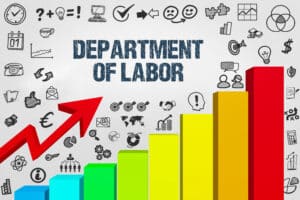
Unfortunately, this type of case is not new, especially to those of us who keep an eye out for such things in the federal courts and Pennsylvania. These cases are on the rise, in part, because of the legal complexities of proper wage payment and subtle differences between wage payment obligations under federal and state law. For example, in 2021, the Pennsylvania Supreme Court decided that Amazon warehouse workers should have been paid, but were not paid, for time spent standing in mandatory security screening lines after their shifts, under the Pennsylvania Minimum Wage Act. That court determined that the time spent by employees waiting in security check lines were hours worked, and, thus, compensable.
For these reasons, Pennsylvania employers must be careful to ensure payment for all hours worked by employees, whether this is time spent standing in a security line, or “donning and doffing” safety gear because doing otherwise risks time-consuming and expensive litigation.
How Businesses Can Ensure Proper Compensation
A few things businesses can do to mitigate the risk of costly legal claims:
- Figure Out What Time is Work Time that Must Be Compensated and Keep Accurate Work Time and Pay Records – make sure time-keeping records are complete and accurate, and supervisors are trained to enforce time-keeping requirements.
- Establish Feedback Opportunities – ensure employees and supervisors have a voice and ability to express complaints and concerns to human resources early. Policies and procedures should be in writing, and permit complaints, afford anonymity if necessary, and include appropriate investigation and follow through.
- Bring in Human Resources (and Legal Professionals) Early – in industries like manufacturing, production and salaried professional staff can feel like different worlds. When human resource professionals are engaged in regular review of policies, as well as day-to-day activities, they have a better relationship with staff that may allow them to uncover and address any unfair practices or dissatisfaction before they become a bigger problem or result in government action or lawsuits. And, when the business is not certain how to address a complaint or particular pay practice dispute, contact experienced legal professionals.
- Review Policies, Procedures and Budgets – know what’s happening on the shop floor and understand how employee time is spent. Consider using available timekeeping tools, like the DOL-Timesheet App. Of course, be aware of shift differentials or mandatory preparation time and other circumstances that can affect payment of a base rate and calculation of overtime for non-exempt workers.
If you are unclear about wage payment compliance or want to ensure that your pay practices and record-keeping practices are not sources of potential legal liability, please reach out to a member of our Employment Law and Labor Relations Department.

